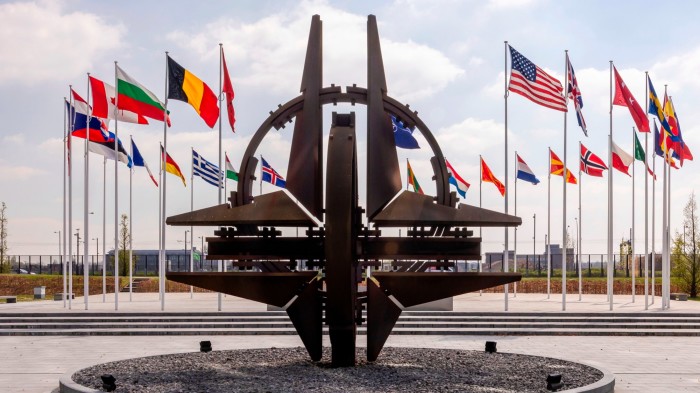Unlock the White House Watch newsletter for free
Your guide to what Trump’s second term means for Washington, business and the world
In all the meticulous preparation for this week’s Nato summit, nobody could have foreseen that it would come straight after a US bombardment of Iran’s nuclear sites. Donald Trump’s decision to join a new war in the Middle East only underscores the American unilateralism and European powerlessness afflicting the Atlantic alliance.
Confidence in Nato has been undermined by Trump’s ambivalence towards America’s mutual defence commitments and the hostility he and his administration have shown to some allies. The failure of many if not all non-American members to invest sufficiently in their security over many years has tested the patience of this US president, and his predecessors, to the limit.
And yet the meeting in The Hague is a chance to start rebuilding faith in alliance. Thanks to astute pitch-rolling by secretary-general Mark Rutte, the chances of a successful meeting are much higher than they seemed four months ago when European capitals were appalled by Trump’s hostility towards Ukraine, the first line of their defence. Nato members agreed in advance to raise military spending to 3.5 per cent of GDP plus 1.5 per cent in related expenditure, giving Trump the big round number he demanded, although an unfair last-minute carve-out for Spain spoils the message of unity.
Higher spending is not only about appeasing the US president. Nato leaders will also approve battle plans and capability targets that have been in the works since Russia’s 2022 invasion of Ukraine. For most countries, fulfilling these defence plans requires spending in the order of 3.5 per cent. Prime Minister Pedro Sánchez argues a mere 2.1 per cent will suffice for Spain, a bit rich for a country that has enjoyed European financial solidarity for decades.
A European promise to spend more is necessary to strengthen the alliance. But it is not sufficient. European collective security rests on several assumptions that can no longer be taken for granted.
The first is that the US will continue to provide the mainstay of European defence efforts. The latest battle plans have this assumption baked in. Yet US defence secretary Pete Hegseth has made clear US priorities lie elsewhere and Europe must “take ownership” of its conventional defence.
The alliance needs a co-ordinated transition plan so that the Europeans can step up as the Americans step back. This is especially true when it comes to so-called “critical enablers” — such as space-based intelligence, reconnaissance and targeting, heavy transport aircraft or air defence — where Europe depends heavily on the US. Some of these capabilities may need to be acquired collectively and could take several years.
A second assumption is the sanctity of Nato’s mutual defence guarantee. Despite more recent assurances from US officials, it is hard to erase previous comments by Trump and his administration suggesting America’s commitment is conditional, not just on defence spending but potentially on trade or even alignment with Maga ideology.
The third is that the US recognises the threat Russia poses to Europe’s security and hence to America’s interests. It is one thing for Sánchez to question the threat, but far more serious if Trump does. Yet as long as the US president refuses to put pressure on Russia to end its war on Ukraine, the perception that he is inexplicably beholden to Russian President Vladimir Putin will persist.
Europeans hope that by agreeing to invest heavily in defence they can persuade Trump to unequivocally commit to a rebalanced Nato, where the US plays a reduced but nonetheless critical role. They may not succeed. But they have no viable alternative and will emerge less dependent on America in the process.
